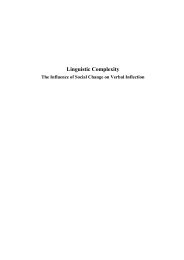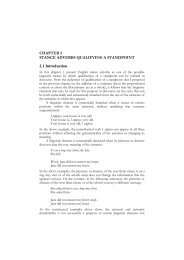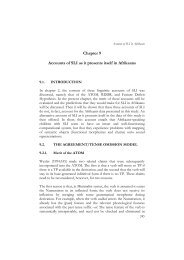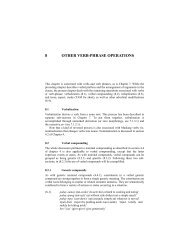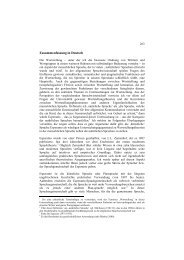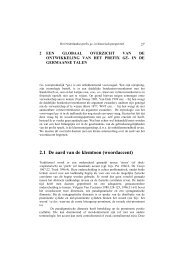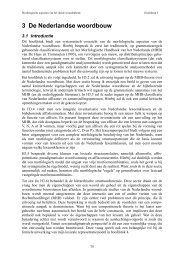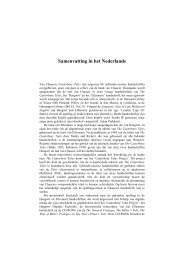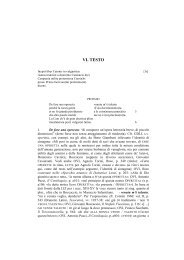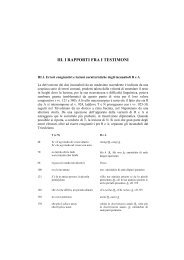Linking elements in compounds - LOT publications
Linking elements in compounds - LOT publications
Linking elements in compounds - LOT publications
Create successful ePaper yourself
Turn your PDF publications into a flip-book with our unique Google optimized e-Paper software.
SIMILARITY OF PLURAL ENDINGS AND LINKING ELEMENTS<br />
‗banana+Ø+balloon, banana balloon‘) and the first part of the compound thus<br />
correspond<strong>in</strong>g to the Dutch s<strong>in</strong>gular for banana (banaan, ‗banana‘). These<br />
results show that a plural mean<strong>in</strong>g <strong>in</strong>duces a preference for the use of a l<strong>in</strong>k<strong>in</strong>g<br />
en among Dutch children.<br />
The observation that left constituents <strong>in</strong> Dutch <strong>compounds</strong> may be<br />
<strong>in</strong>terpreted as regular plural forms is problematic for the level-order<strong>in</strong>g<br />
hypothesis (Kiparsky, 1982) and the words-and-rules theory (P<strong>in</strong>ker, 1999).<br />
Both theories predict that irregular plurals may occur as modifiers <strong>in</strong><br />
<strong>compounds</strong> (mice eater), whereas regular plurals (*rats eater) cannot. However, the<br />
Dutch translation equivalents muis+en+eter (‗mice eater‘) and rat+en+eter (‗rat<br />
eater‘) which conta<strong>in</strong> a l<strong>in</strong>k<strong>in</strong>g element en <strong>in</strong> between the two constituents<br />
provide a counterexample, because both examples may be analyzed as be<strong>in</strong>g<br />
composed of a regular noun plural as modifier (muizen+eter, ‗mice+eater‘ and<br />
ratten+eter, ‗rats+eater‘). If these forms are plural nouns, it means that regularly<br />
<strong>in</strong>flected nouns feed compound formation <strong>in</strong> Dutch.<br />
However, not all l<strong>in</strong>guists agree with the perspective that Dutch l<strong>in</strong>k<strong>in</strong>g en is<br />
similar to the plural suffix -en (de Haas & Trommelen, 1993; Verkuyl, 2007).<br />
Verkuyl (2007, p. 457-458) for <strong>in</strong>stance, refutes the idea that boek+verkoper<br />
(‗bookseller‘) denotes one boek (‗book‘) and boek+en+plank (‗bookshelf‘)<br />
denotes a shelf for several boeken (‗books‘). In his view, plural and s<strong>in</strong>gular are<br />
characteristics that belong to phrases and not to s<strong>in</strong>gle nouns. De Haas and<br />
Trommelen (1993, p. 402) report that l<strong>in</strong>k<strong>in</strong>g e and en are both pronounced as<br />
[ə] and they consider the spell<strong>in</strong>g difference between the two as irrelevant.<br />
Furthermore, they report that <strong>in</strong> <strong>compounds</strong> like boek+en+kast (‗bookcase‘) it is<br />
not possible to decide that the en of boek+en (book+en) is a plural suffix or a<br />
l<strong>in</strong>k<strong>in</strong>g element (de Haas & Trommelen, 1993, p. 361).<br />
Some l<strong>in</strong>guists take an <strong>in</strong>termediate position <strong>in</strong> this discussion and make a<br />
dist<strong>in</strong>ction between plural morphemes and l<strong>in</strong>k<strong>in</strong>g <strong>elements</strong> (Bauer, 2003, p. 30;<br />
Booij, 2007, p. 88-89). In their view, the l<strong>in</strong>k<strong>in</strong>g en is sometimes considered a<br />
plural morpheme (e.g., sted+en+raad, ‗cities‘ council‘), and sometimes a<br />
31



